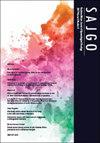子宫颈癌筛查的替代抽样方法:从实验室的实际观点
IF 0.1
Q4 OBSTETRICS & GYNECOLOGY
Southern African Journal of Gynaecological Oncology
Pub Date : 2013-01-01
DOI:10.1080/20742835.2013.11441215
引用次数: 3
摘要
南非的宫颈癌筛查覆盖率不足,估计有880万未接受筛查的妇女主要由资源匮乏地区的公共卫生部门提供服务。需要考虑其他筛选方案。筛选过程中的每一步都需要严格评估,以设计一个没有瓶颈的实用方案,以有限的可用资源提供最大的效益。患者自我取样已被确定为许多妇女可接受的标本采集方法。患者自我抽样与基于高危人乳头瘤病毒的检测相结合,有可能增加宫颈癌筛查的覆盖率,特别是在筛查不足的地区。本文章由计算机程序翻译,如有差异,请以英文原文为准。
Alternative sampling methods for cervical cancer screening: practical perspectives from the laboratory
Abstract The coverage of cervical cancer screening in South Africa is inadequate, with an estimated 8.8-million unscreened women who are mainly serviced by the public health sector in lower-resourced areas. Alternative screening options need to be considered. Every step in the screening process needs to be critically evaluated to design a practical programme without a bottleneck, to deliver maximum benefit with limited available resources. Patient self-sampling has been identified as an acceptable method of specimen collection for many women. Patient selfsampling, combined with high-risk human papillomavirus-based testing, has the potential to increase cervical cancer screening coverage, especially in areas where screening is inadequate.
求助全文
通过发布文献求助,成功后即可免费获取论文全文。
去求助
来源期刊

Southern African Journal of Gynaecological Oncology
OBSTETRICS & GYNECOLOGY-
自引率
0.00%
发文量
0
审稿时长
24 weeks
 求助内容:
求助内容: 应助结果提醒方式:
应助结果提醒方式:


